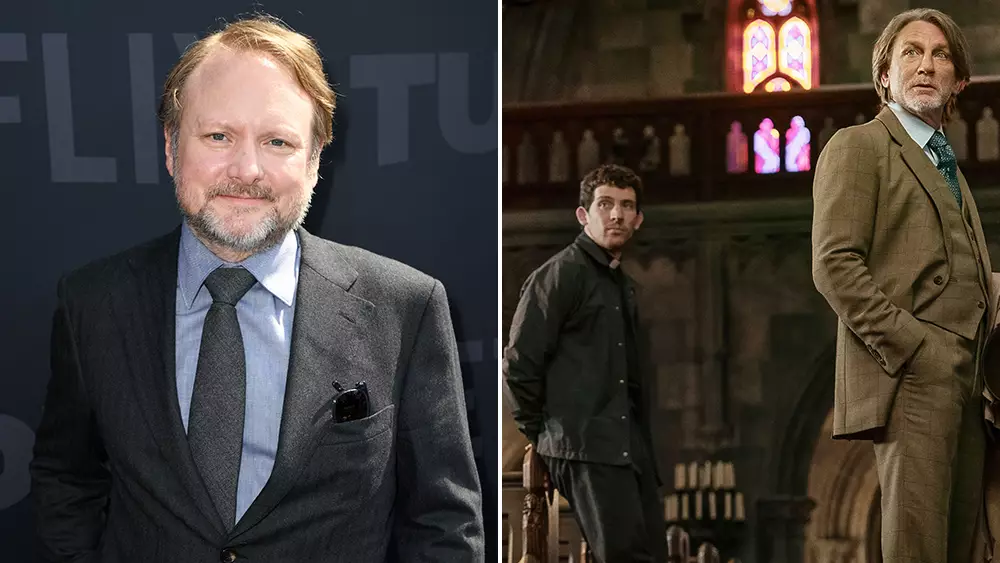In the evolving landscape of contemporary storytelling, directors and writers often grapple with the tension between staying true to genre conventions and innovating beyond them. Rian Johnson’s decision to steer the next Knives Out installment, *Wake Up Dead Man*, into a Gothic, Edgar Allan Poe-inspired realm exemplifies a bold refusal to rest on laurels. This move is not merely a stylistic choice but a statement that artistic integrity demands continuous reinvention, even within popular franchises or genre boundaries. Johnson appears acutely aware that repetitive formulas, no matter how successful, threaten to stagnate both creator and audience alike.
In a media climate dominated by sequels and safe nostalgia-driven ventures, Johnson’s approach signals a deeper commitment to resisting complacency. By returning to the origins of detective fiction—well before Agatha Christie—he emphasizes that genre history is rich with dark, psychological tones that push storytelling into unsettling territories. This choice to adopt a “gothic” tone isn’t just an aesthetic shift; it’s a rejection of the superficial comfort of camp and spectacle in favor of emotional depth, grounded storytelling, and narrative sophistication. It’s a call for Hollywood and serial franchises to elevate their craft and challenge audiences mentally and emotionally, rather than simply entertaining them with predictable twists.
Redefining Artistic Courage in a Commercialized Industry
The very notion that filmmakers chase novelty to keep their work engaging reveals a profound understanding of artistic necessity. Johnson acknowledges that audiences are not passive recipients but discerning viewers craving authentic experiences. Repeating the same tonal palette risks alienating those who seek something more meaningful from popular entertainment. His insistence on “not turning out more of what I did last time” underscores an imperative: creativity requires risk. Playing it safe—using the same storytelling rhythms, tone, and style—may yield commercial success, but it ultimately impoverishes the art form and stifles cultural progress.
This perspective echoes a broader philosophical stance that artistic innovation must remain at the core of genre filmmaking. It’s a defiance of the widespread corporatization that often encourages filmmakers to replicate franchises ad infinitum, sacrificing depth for profit. Johnson’s willingness to craft a Gothic mystery, reminiscent of Poe’s dark psychological tales rather than sterile whodunits, exemplifies that genuine artistry demands pushing boundaries. It invites audiences to confront their own fears, doubts, and moral ambiguities through more introspective, atmospheric storytelling.
Implications for Cultural and Political Discourse
This creative stance also carries significant implications for cultural dialogue, particularly within a center-leaning liberal paradigm that champions both innovation and social consciousness. Artistic risk-taking like Johnson’s challenges monolithic narratives and encourages diverse storytelling approaches. It advocates for a media landscape that values complexity over simplicity, introspection over spectacle, and genuine engagement over superficial entertainment.
In a broader sense, embracing gothic elements—often laden with themes of decay, morality, and human frailty—serves as an allegory for societal introspection. It reminds us that progress often entails confronting uncomfortable truths, delving into the darker side of human nature, and resisting the temptation toward bland conformity. The film industry, much like society, benefits from such bravery; it fosters dialogues that question the status quo, push for authenticity, and refuse to marginalize narratives that challenge conventional perceptions.
By deliberately shifting tone and exploring darker storytelling realms, Johnson exemplifies a form of artistic activism—one that encourages creatives to be courageous, to challenge themselves and their audiences, and to resist the easy allure of profitability at the expense of depth. It’s a call for a more thoughtful, critical engagement with popular media, ensuring that entertainment remains a space for profound reflection rather than escapism.
—
This reimagined article advocates that embracing creative risks—like transitioning to a Gothic aesthetic—can serve as a vital form of artistic resistance and evolution. It underscores that in an era craving authenticity and complexity, such bold moves are not just stylistic gambits but necessary steps toward a more meaningful cultural dialogue.

Leave a Reply